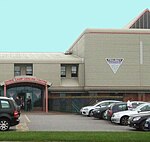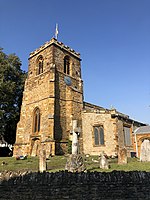Milton Malsor
Civil parishes in NorthamptonshireCountry houses in NorthamptonshireHistory of NorthamptonshireTourist attractions in NorthamptonshireUse British English from October 2013 ... and 2 more
Villages in NorthamptonshireWest Northamptonshire District

Milton Malsor is a village and civil parish in West Northamptonshire, England. The population of the civil parish at the 2011 census was 761. It is 4 miles (6.4 km) south of Northampton town centre, 45 miles (72 km) south-east of Birmingham, and 66 miles (106 km) north of central London; junction 15 of the M1 motorway is 2 miles (3.2 km) east by road. The area of the Milton Malsor civil parish is about 1,650 acres (670 ha), stretching from north of the M1 motorway between junctions 15 and 15A, south to the West Coast Main Line, east to the A508 and A45 roads, and west to the A43 road.
Excerpt from the Wikipedia article Milton Malsor (License: CC BY-SA 3.0, Authors, Images).Milton Malsor
Orchard Close,
Geographical coordinates (GPS) Address Nearby Places Show on map
Geographical coordinates (GPS)
| Latitude | Longitude |
|---|---|
| N 52.194 ° | E -0.927 ° |
Address
Orchard Close
Orchard Close
NN7 3AY , Milton Malsor
England, United Kingdom
Open on Google Maps









